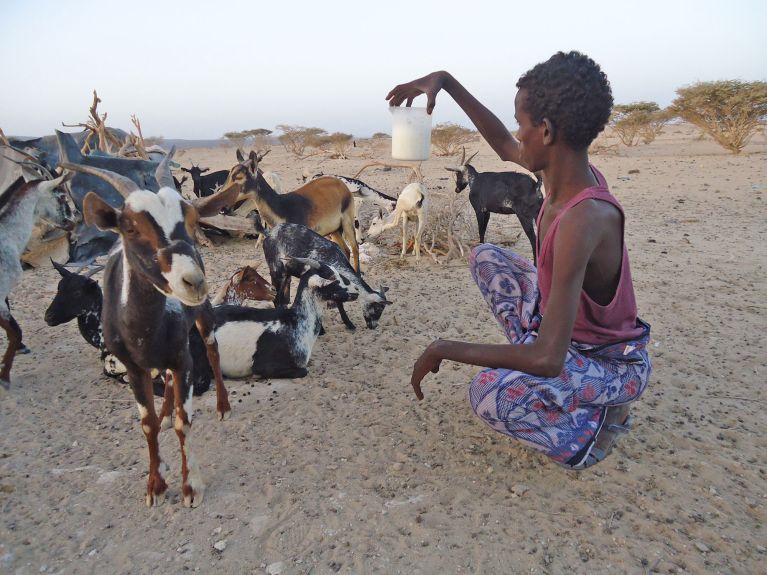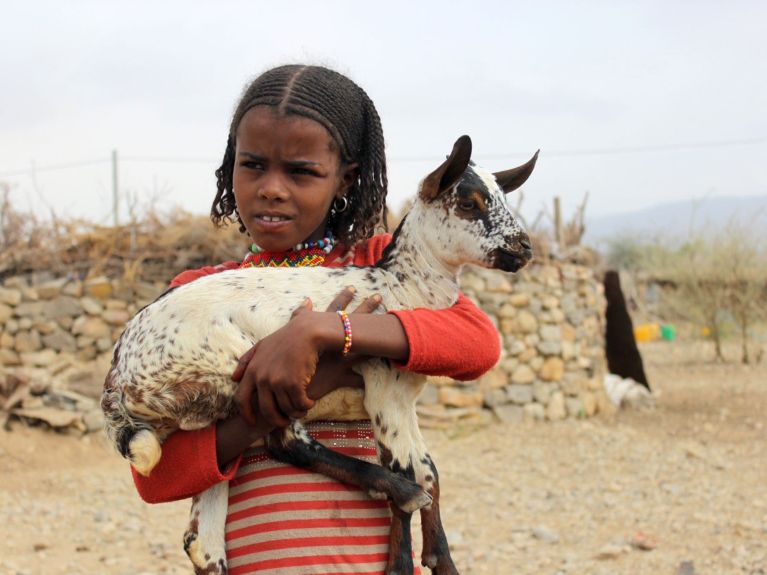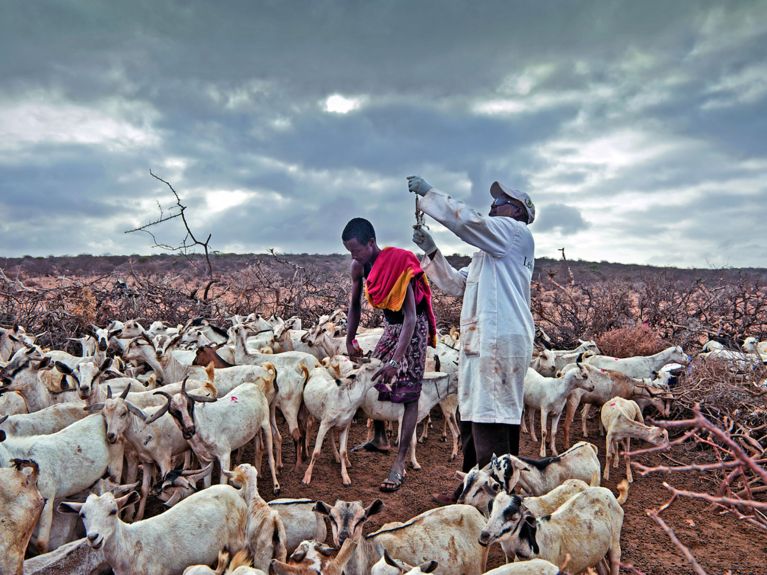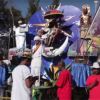When animals spell survival
How the German NGO “Tierärzte ohne Grenzen” is helping to combat the root causes of migration in Africa.

In March 2017 Cornelia Heine, Gerald Gerlach and Wilhelm Dühnen landed in Semera, Ethiopia, in the capital city of the very dry semi-desert region of Afar. Two million people live here, most of them as pastoralists. The three Germans were part of the team at Tierärzte ohne Grenzen (ToG or VSFG as it is known internationally) that supports six aid projects in Afar. They wanted to get a better idea of how the projects were faring. Afar is one of the world’s hottest regions, often with less than 400 mm of rain a year and temperatures of 50°C or higher. There, the trio meet Esmael, VSFG’s local project manager. It was he who set up the first project in this region, and it meant that Tierärzte ohne Grenzen or Vétérinaires sans Frontìeres Germany was also the first foreign NGO active on the ground in Afar.

In 2016, the region in northeast Africa had to contend with the worst drought in 30 years. More than 500,000 animals in Afar died from a lack of water or fodder, but also from infectious diseases, because they were already severely weakened by the drought. And when the animals die, the people lose the very basis of their livelihoods. Moreover, as in other African countries, livestock in Ethiopia suffers from “Peste Petits Ruminants” (PPR), a highly infectious viral infection and one of the greatest problems in the region. It kills many sheep and goats, and the decimated herds increasingly do not suffice to feed the pastoralists.
The German NGO, so Cornelia Heine explains, is busy helping contain the disease by training so-called “Community Animal Disease Reporters”, who identify an outbreak of the disease at an early date and report it. Then VSFG can swiftly arrange to have the herds affected vaccinated. In this context, they are part of a global action plan to stamp out the disease launched by FAO, the United Nations Food and Agricultural Organization, and OIE, the World Organisation for Animal Health. Such a programme was also effective in eradicating smallpox and rinderpest. Back in the late 1990s, ToG played a strong role in the drive against rinderpest by training animal health workers in East Africa.
An important contribution to tackling one of the root causes of migration
All in all, the veterinary doctors managed to help 3.2 million people in Africa last year, among others by deworming and vaccinating 6.5 million animals. In this way, VSFG is not only helping secure the population’s livelihood, but also combatting one of the root causes of migration. “We are working with people whose livelihoods are based on or closely associated with animal husbandry and making animal products,” says a spokeswoman for the organization. Village communities, women’s groups, and local authorities seek the advice of the vets, who have meanwhile dispatched more than 1,300 local animal health workers to the various districts.

In the more northern regions of Ethiopia, the landscape is barren and consists only of volcanic rock. Here, people live in typical round huts. When the visitors from Germany arrive, the inhabitants beg them for water, as the next water point is seven kilometres away. Government lorries have been ferrying water to the remote villages since the major drought, and the water is then offloaded into concrete tanks. “However, the help doesn’t always reach everyone,” the team reports. For this reason, in its projects VSFG not only focusses on vaccinations for the animals, but also on ensuring water supplies for the inhabitants. Using a so-called “birka”, a water retention basin made of stone, the water runoff in the rainy season can be collected and thus stored. Building such a basin costs 7,000 Euros. VSFG also supports the laying of water pipes, helps repair defective water points and provides solar-powered pumping systems.
In another region of Ethiopia, where there are 80 different ethnicities, each often with its own language and culture, two months before the Germans’ visit the project team distributed goats to local families that had lost their animals in the drought. “The goats and families were all in great shape and the small goat herds had already produced their first offspring,” the visitors reported with satisfaction.
Preserving the topsoil is another project to which VSFG commits time and effort, as strong erosion leads to the loss of precious pastureland. In so-called “Cash-for-Work” programmes, often hundreds of people from the local communities earn a small wage each day to perform crucial tasks: “Along a mountain ridge with sparse vegetation you can see stone walls at regular intervals. When it rains, the water does not run down as quickly, and the earth can absorb the moisture. Thanks to the walls being built, the hill will in a few years be overgrown by grass and bushes,” Cornelia Heine explains.
VSFG has been providing active assistance in the Horn of Africa since 1998. The administration is based in Berlin, and there is a central regional office in Nairobi. It has offices in Ethiopia, Kenya, Somalia, Sudan and South Sudan and branches in the individual regions where it runs projects. In 2016, the NGO had a total budget of 6.7 million Euros, mainly from grants from the European Union Development Fund (EDF), the United States and Australia, as well as from the Churches. Some of the projects are financed by donation campaigns, for example the vaccination campaign VSFG runs each year, and in which 1,250 vets in Germany take part. On one day each year they donate half of their earnings from vaccinations.
